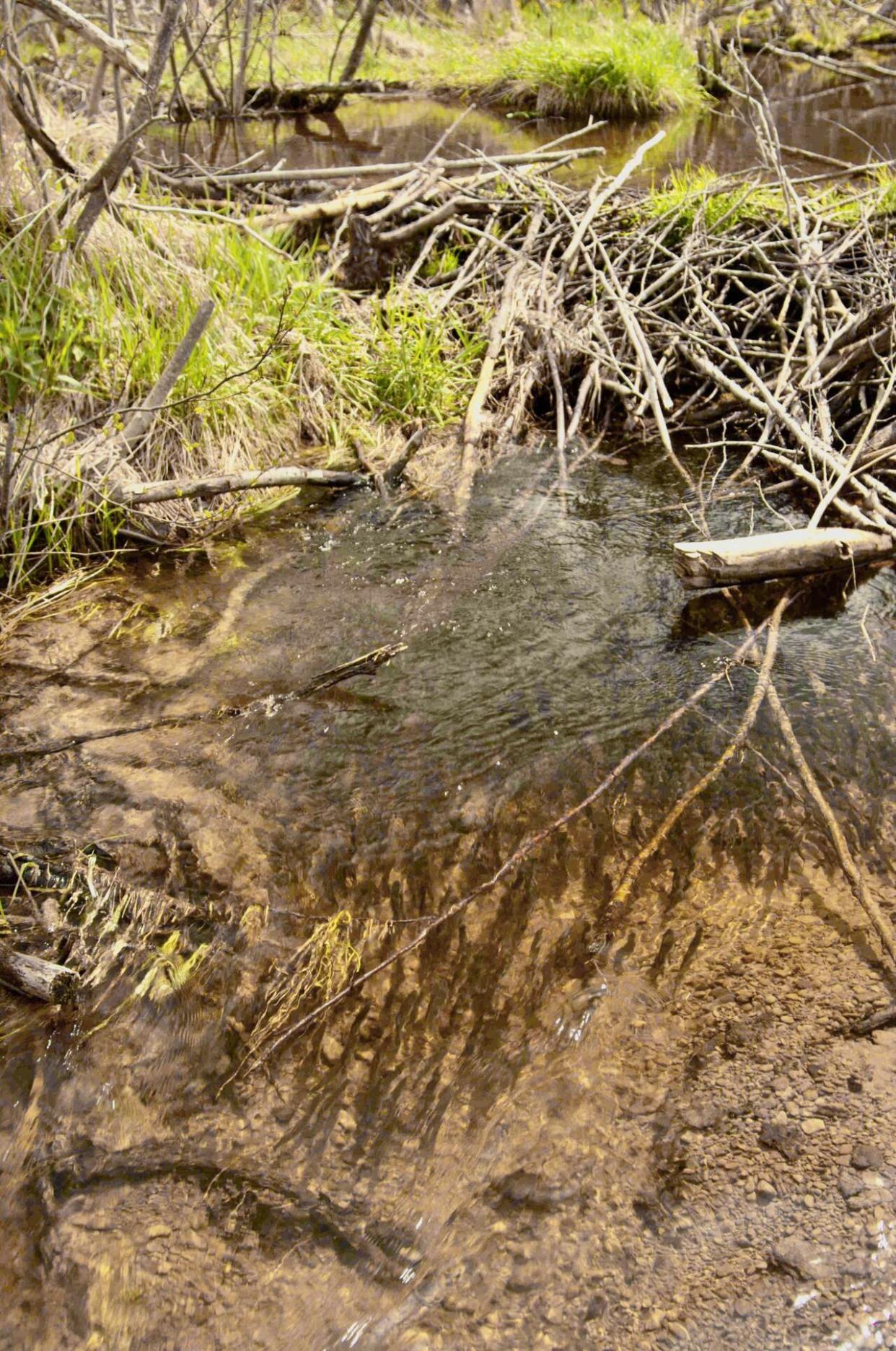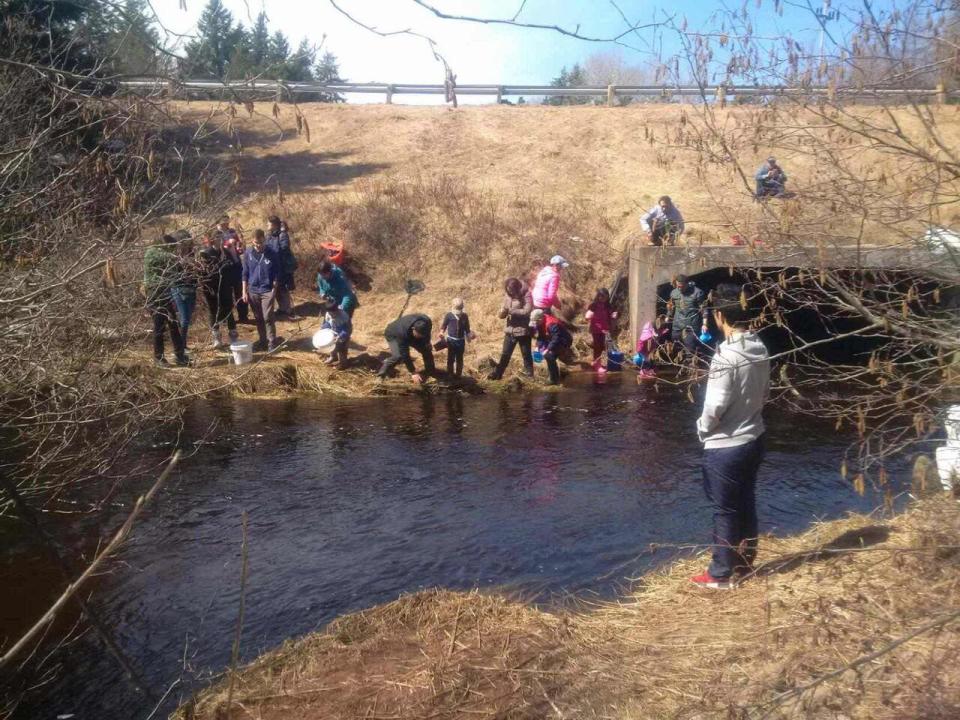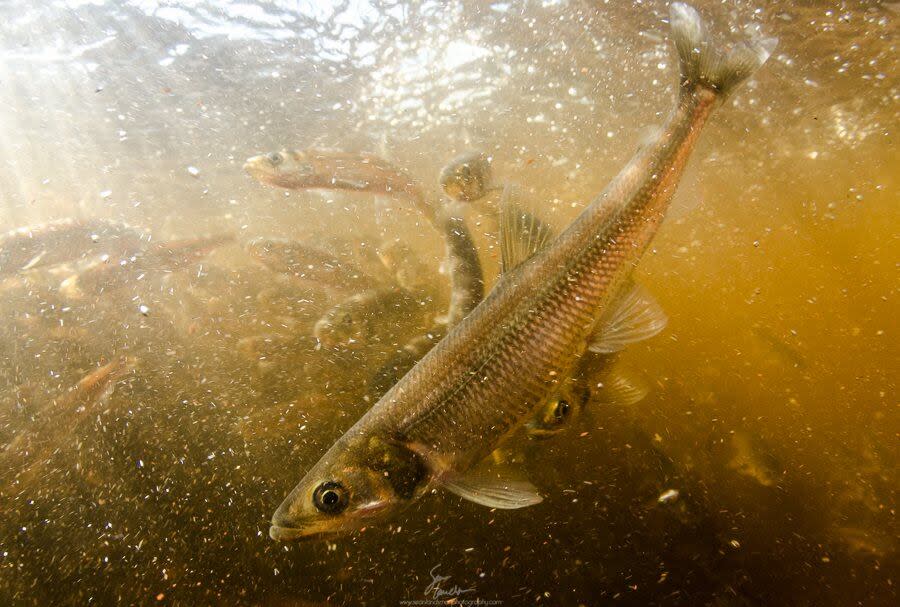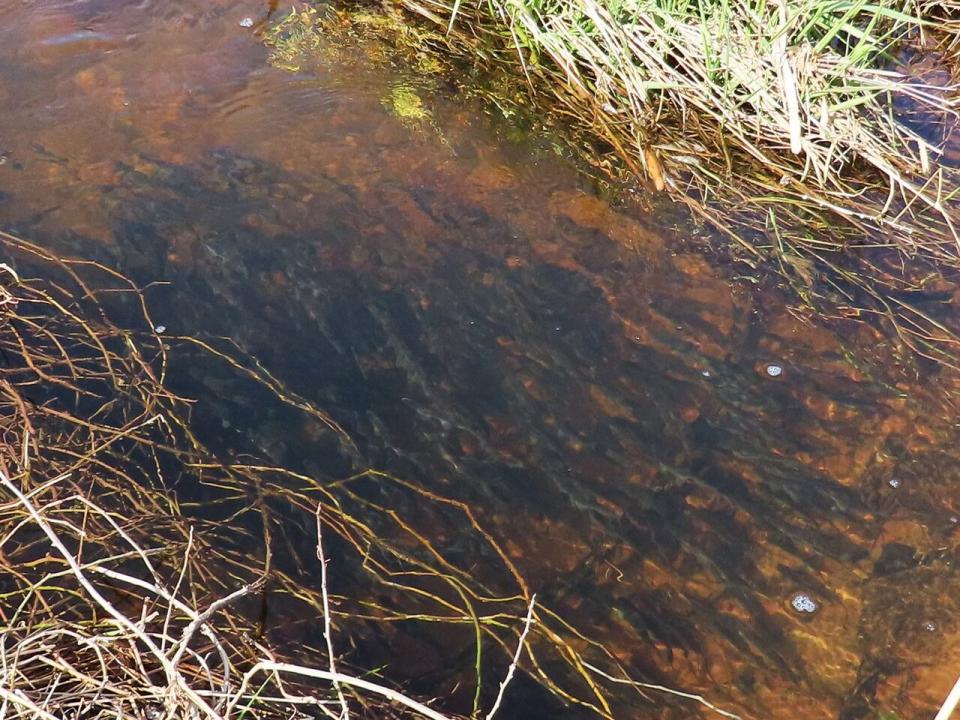P.E.I.'s spring dip-net fishery brings calls for more enforcement of smelt limits

P.E.I.'s spring smelt fishery has been growing in popularity, with carloads of people and often entire families heading to fishing spots along the Hillsborough River to catch a feed of the small fish.
But acting on concerns expressed at a meeting of the Prince Edward Island inland recreational fisheries advisory committee this past January, conservation officers have been checking to make sure fishing limits are being respected.
Matthew MacEwen, a Charlottetown-based conservation protection supervisor for the Department of Fisheries and Oceans, said he and his team checked about 130 people over the course of a couple of hours at the peak of this year's dip-net smelt fishery.
"We did write some summary offence tickets, which is much like if you were speeding and you got caught by the RCMP, you get a ticket for it," he said. "So there is a fine associated with that.
"It's $250 for being over your limit. It increases depending on how many over."
MacEwen said his department has received some complaints about people taking too many smelts, and there have also been calls to Crime Stoppers connected to overfishing.
Season lasts 11 weeks
Fishers can use dip nets to harvest smelts from April 1 to June 15, in both tidal and inland waters, and they can catch up to 60 fish per person per day this way.
Concerns about the actual number of smelts taken in recent years were voiced at that advisory meeting in January, said Dan McAskill, president of the Hillsborough River Association.
"There's a limit of five dozen, but there were some people that were taking hundreds, some that were taking thousands," he said. "Enforcement is required to be able to police that, so they don't take more than the legal limit."

Smelt fishers gather with dip nets at Clarks Creek in 2017. (Submitted by Dan McAskill)
This is by no means the only way smelts are caught. There is a commercial fishery, carried out using gill nets or box nets, and Island fishers can also use fishing rods and spears to catch smelts through the ice in the winter season.
The spring season is where the concern lies, McAskill said.
"You're looking at very large numbers of smelt during the peak of the season, and that's generally when people fish," he said. "If you're in a dense school, one scoop and you'd have to be putting fish back. So they have to count them out."
Important to ecosystem, including human use
McAskill said smelts are an important part of the Hillsborough River ecosystem, as food for foxes, raccoons, herons and eagles, as well as a traditional delicacy for humans.

Dan McAskill, seen here near the Pisquid River, is president of the Hillsborough River Association. (Aaron Adetuyi/CBC)
"Every family has a favourite recipe. It's a white fish, and is very much liked and has a nice flavour," said McAskill, who grew up on Prince Edward Island and has been fishing smelts for decades.
"It was an easy way to get a very nice meal for the family pantry."
Smelt fisher Josh Lea said he's seeing crowding along easily accessible sections of the Hillsborough River watershed where the smelts run in spring, including Clarks Creek.
He said too many people are also wading right into the streams, even though they are asked not to. It's all too easy to trample some of the hundreds of thousands of eggs the smelts have laid along the shoreline.

Sean Landsman captured this photo of a smelt run in 2016. (Sean Landsman)
"They're high-traffic zones. It gets a lot of action," Lea said. "It's just a continuous flow of people coming in and dip-netting, stirring the bottom of the river up. And so they're not getting the numbers of spawn to hatch."
Limits to season in future?
Lea said the cormorant and seal populations are also taking a toll on the stock, but he thinks the worst impact is from the dip netting of the spawning fish.
MacEwen was at the meetings this winter when proposed changes to the dip net fishery came up.
"There was discussion if we should be removing or limiting the season," he said.
"Right now, the season is April 1 to June 15. So should we maybe close this season a little bit more, maybe not having it that long, maybe having a shorter season?"
'I didn't know the rules'
As for the enforcement action this spring, MacEwen said many people were surprised to find out there is a limit on smelts, but he said that's not a valid excuse for overfishing.

John te Raa took this photo of smelts on April 19, 2024. (Submitted by Dan McAskill)
"There's rules behind all the species here on P.E.I., so we ask that [people] make sure that they do some research," he said. "A lot of the times, [when] I'm issuing that ticket, some people say, 'I didn't know the rules.'"
He noted that he works with the newcomer community to make sure they do know the rules around recreational fishing, including partnerships with Holland College and Immigrant & Refugee Services Association P.E.I.
"In our education sessions, one thing we do with Holland College is we have translators and so this year I think we had five translators for five different languages," MacEwen said.
"So that's something that DFO is definitely looking into."

